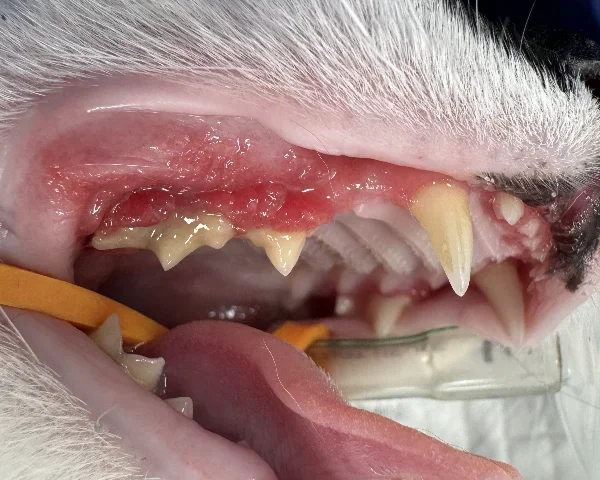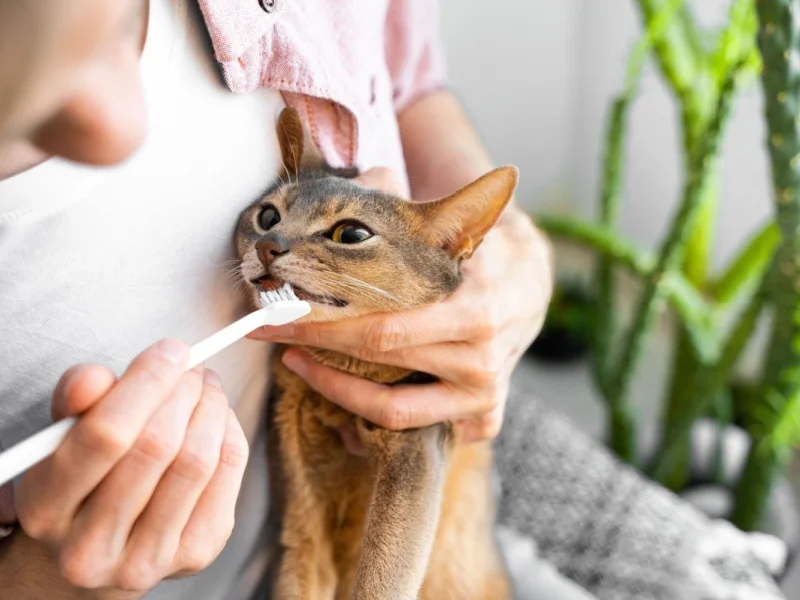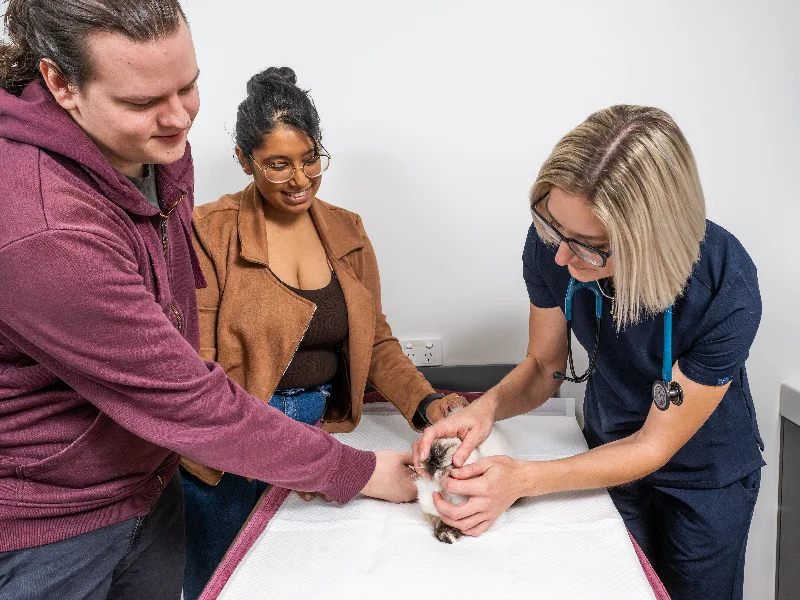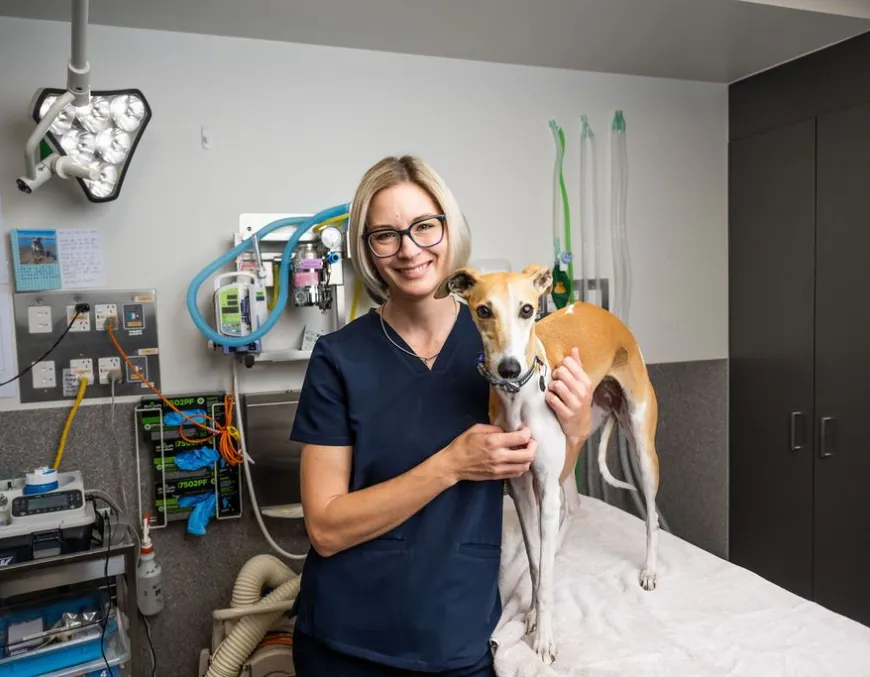Removing complex teeth safely and with minimal impact.

Understanding Juvenile Gingivitis and Periodontitis in Cats
A kitten’s mouth doesn’t always erupt into adulthood without a few biological misfires along the way. Juvenile gingivitis and periodontitis are surprisingly common in kittens, yet this is often misunderstood or overlooked.
These conditions can involve anything from mild gum inflammation to bone loss, and the signs aren’t always obvious. Most cats won’t complain, and from the outside, everything can look completely normal.
At Advanced Animal Dentistry, we offer specialist veterinary dental care for a range of feline oral health conditions, including juvenile gingivitis and periodontitis.
To better explain them, we spoke with our veterinary dental team, Dr Bec Tucker and Dr Aaron Forsayeth. Let’s take a closer look at the differences, causes, treatment options and what owners can expect over time.
The difference between gingivitis, periodontitis and stomatitis
While the terms gingivitis, periodontitis and stomatitis are sometimes confusing to pet owners, they describe distinct conditions. Each one affects various tissues in the mouth and carries unique implications for diagnosis, progression and treatment.
Gingivitis is the mildest of the three and is confined to the gingiva (gums), the thin tissue surrounding each tooth. It often presents as redness, swelling or bleeding and is typically caused by plaque buildup. If caught at this stage, gingivitis is fully reversible with proper care.
When inflammation spreads beyond the gumline and begins to damage the deeper support structures of the teeth, it becomes periodontitis. This stage involves destruction of the periodontal ligament and surrounding alveolar bone. Unlike gingivitis, the damage is often permanent and can’t be reversed, even with ongoing treatment.
On the other hand, stomatitis refers to inflammation of the oral mucosal surfaces beyond the gingiva. This often involves inflammation and ulceration of the tissue above and below the gums, the inner surfaces of the cheek and further back in the mouth towards the throat. It is regularly associated with more complex or immune-mediated conditions. Though a common term in feline dentistry, its meaning can be misunderstood. As Dr Forsayeth explained, “It’s kind of a catch-all term… people say stomatitis when they mean feline chronic gingivostomatitis (FCGS), but really stomatitis just means inflammation of the mucosa.”

When and why these conditions develop
Juvenile gingivitis and periodontitis usually begin to appear around six months of age, which often coincides with the eruption of adult teeth. Some signs may emerge earlier, but they’re easy to miss unless you’re looking closely. At this stage, the inflammation might be mild or dismissed as part of the teething process.
In some cases, these conditions may be linked to how the gums respond as the new teeth come through. Rather than settling down after eruption, the tissue appears to remain reactive, which results in persistent inflammation or gingival hyperplasia. Dr Bec suggested, “In some patients, the gingiva does not seem to remodel around the permanent teeth as they erupt and remains red, angry and almost appears to be overgrown.”
Whilst we don’t fully understand the cause of juvenile gingivitis and periodontitis, we think it may be, in many cases, an over reactivity that some individual cats have to plaque bacteria.
There may also be a breed-related component. Purebred cats, particularly Oriental types, appear more frequently in clinical cases, though it’s not limited to any one breed. As Dr Aaron observed, “We do see it across the board, but there’s definitely a trend with certain breeds.”
Diagnosing and managing Juvenile Periodontal Disease in felines
These conditions don’t always look serious at first glance. Mild redness or swelling might be the only visible signs, which is why proper diagnosis needs more than a quick peek at the inside of the mouth.
Visual signs can underestimate the true level of disease, which makes diagnosis and prognosis tricky without further investigation. As Dr Aaron explained, “You don’t know what you’re looking at until you X-ray it. It could be early inflammation, or it could be end-stage periodontitis.”
Treatment often starts with a thorough oral assessment and prophylaxis, and, if needed, trimming back of hyperplastic gum tissue that hasn’t remodelled after tooth eruption. The aim is to calm the inflammation down and get a clearer idea of how the mouth responds over time.
Medications like antibiotics and steroids aren’t the answer in these cases. They might help temporarily, but they don’t fix the underlying problem and can make it harder to work out what’s really going on if used too soon.
It is not unusual for patients to require frequent professional care (scale and polish procedures) and strict plaque control at home with daily brushing to provide the best chance of control and/or resolution. Despite this, some patients will still progress to severe periodontitis and require extractions at an early age.
Living well after diagnosis and treatment
The long-term outcome for cats and kittens diagnosed with juvenile periodontal disease can vary. Some respond well to early care and stabilise over time, while others continue to lose attachment despite close monitoring and intervention, and may eventually require extractions to stay comfortable.
Dr Aaron has experienced this with his own female Sphynx cat, Polly, who began showing signs of gingivitis and periodontitis as a kitten. Despite regular professional treatment and home care, the persistent gingival inflammation Polly was experiencing did not resolve and resulted in periodontal disease with loss of structural support around many of her teeth. Polly was diagnosed with Juvenile Periodontitis and ultimately went on to have full mouth extractions performed, which resolved all her problems.
Dr Aaron is pleased to report, “She’s four now. She eats fine. She’s not on any medication. She’s just a really happy cat.”
There’s no single approach that fits every case. Some cats are very well managed with regular home care and professional treatment, sometimes even outgrowing the condition, whilst others benefit from early, decisive treatment, such as extractions. Our focus as veterinary dentists is always on reducing inflammation and keeping the cat comfortable, but we also make sure to talk owners through the options, including what’s realistic long term and what’s financially manageable.

Are you concerned about the oral health of your cat or kitten?
Ultimately, juvenile gingivitis and periodontitis are serious, often painful conditions that aren’t ‘just teething issues.’ If your cat has persistent gum inflammation, it’s important to consult your vet and ensure they receive a proper assessment.
As Dr Aaron notes, “You can have mild gingivitis and really advanced periodontal disease, or you can have angry red gums and everything’s fine underneath.” Without a thorough oral examination and X-rays under anaesthetic, there’s no way to know what’s really going on below the surface.
At Advanced Animal Dentistry, we regularly see young cats referred for assessment and treatment of juvenile oral health conditions. If you’re a pet owner with concerns, speak with your primary vet about a referral. We’re here to support both you and your veterinary team with tailored, specialist care.
You can also visit our pet owners’ page and explore additional resources.














